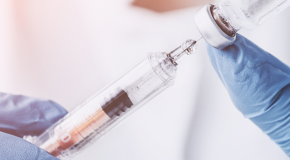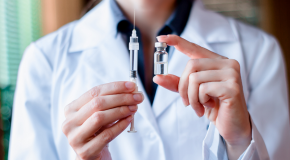In 1984, Margaret Heckler, then US secretary of Health and Human Services, announced that Dr Robert Gallo and his team had identified the HIV virus, and told reporters, “We hope to have […] a vaccine ready for testing in approximately two years.” Billions of dollars of research investment later, and a string of failed clinical trials, there is still no approved HIV vaccine today. In December 30, 2019, when the Chinese government announced a mysterious outbreak of respiratory disease, it was within two weeks that the genetic sequence of SARS-CoV-2 (the virus causing covid-19) was published. Eight months and 600,000 deaths later we are racing against a six to 18-month deadline to develop a safe and effective vaccine. Already, vaccines from Oxford University, UK (with AstraZeneca), China’s Sinovac and Sinopharm, and US biotech Moderna are in the final stage of testing, Phase III, were efficacy against infection and safety are proven—with others from Inovio, CanSino, Pfizer/BioNTech poised to start Phase III. The cautious optimism around the development of a covid-19 vaccine is not simply the triumph of hope over experience, but is based in differences between the viruses and the effectiveness of the human body’s defensive immune response against HIV and SARS-CoV-2.
The vast majority of the 12,000,000 people infected with covid-19 have had mild or asymptomatic infection (80%), 15% were hospitalized, around 2-3% died. The remainder have protective immune responses that control and eliminate infection, and—we think—protect against re-infection. ‘Immunity’ against re-infection is now supported by three studies in monkeys. Like hepatitis A, measles, and polio, covid-19 is defeated by infection-induced antibodies and killer cells, and these responses protect against re-infection. While we do not fully understand covid-19 immunity, early observations provide hope that a vaccine may be practicable.
By comparison, HIV is tricky. It has an astronomical rate of mutation. Critical parts of the virus are deeply hidden from infection-fighting proteins (antibodies), are covered by large fronds of sugar molecules, and contain “decoys” that misdirect the body’s defensive responses. HIV literally becomes a part of us, inserting copies of itself throughout the body. HIV infects and destroys particular immune cells—specifically helper T cells—that facilitate immune responses. The immune response against HIV, hobbled by the loss of helper T cells, struggles vainly to catch up with HIV mutations, progressing inexorably without treatment to AIDS and death. Furthermore, despite these responses an HIV-infected person can become “super”-infected by a second HIV strain. The immune responses against HIV cannot control, eliminate, or protect. The science of an HIV vaccine has proven daunting, but progress against these challenges may make covid-19 vaccine development easier.
Vaccines work by mimicking infection. By making the defensive immune system think that infection has occurred, vaccines induce a protective response comprising infection-fighting antibodies, helper cells, and killer cells without actual disease. Classically, it is easiest to make vaccines when individuals can make effective, protective immune responses to infection on their own. Many scientists believe this applies to covid-19, hence cautious optimism that a vaccine will be found safe and efficacious.
In addition, there are economic, societal and behavioral differences between the paths to vaccine discovery for HIV-1 and covid-19. The list of companies working on covid-19 vaccines includes vaccine “blue bloods” like GSK, Merck, Sanofi, Pfizer, Johnson & Johnson, big drug companies like AstraZeneca and a host of hot biotechs. The number of big vaccine companies working on HIV vaccines is only one. At issue is balancing risk and incentive. The five to 10-year timeframe for vaccine development costs an estimated US$500m to US$1.5bn. The failure rate from lab to license is 93%. Imagine if a covid-19 vaccine only had a market in low- or middle-income countries—would any major company be involved? Covid-19 falls into the paradigm of a mixed high-income and low-income market; HIV does not. As further incentive, Operation Warp Speed and The Coalition for Epidemic Preparedness Innovations (CEPI) are underwriting the cost of vaccine development (currently at around US$5bn)—de-risking development for the sake of speed.
The full impact of covid-19 in low- and middle-income countries remains unquantified. Lacking the resources to fund vaccine development, guarantee vaccine purchase (like US and several EU countries) or manufacture vaccines locally, the vaccine access challenge facing the global south is magnified by a dearth of mitigating options—constrained by poverty, under-resourced health sectors, and a lack of data on disease burden. CEPI, with its ~US$1.4 billion program, has specific clauses for global access and affordability in funding agreements. Just how affordable remains unknown. CEPI, WHO and Gavi (the Vaccine Alliance) have formed a consortium COVAX that hopes to accelerate vaccine development and to ensure that participating countries will have early access to 20% of their covid-19 vaccine needs. More than 150 countries, including some G7 countries, have signaled their intent to participate and fund. No similar urgency or alignment exists around an HIV-1 vaccine.
Finally, society has come to view science differently. Many of us recall artist Keith Haring’s “ignorance = fear” and “silence = death” poster, challenging science for answers to AIDS and challenging society to put aside its prejudices. We see a different dynamic of anti-science and denial, where ignorance is fearlessness and obstreperousness is death. In some countries, the politics of divisiveness at best ignore and at worst stigmatize compliance with good public health practice.
There is optimism that a safe and effective covid-19 vaccine will bridge societies to something like “old” normal, perhaps even in 12 to 18-months. For HIV-1, it has been 36 years without a vaccine. With possibilities opened up by covid-19 vaccine development, what will it take to bridge to a future free of HIV?
On 5 August 2020, Dr Kim joined an Economist Events webinar to discuss the developing of vaccines against covid-19, click to watch on-demand
The views and opinions expressed in this article are those of the author(s) and do not necessarily reflect the views of The Economist Group or any of its affiliates. The Economist Group cannot accept any responsibility or liability for reliance by any person on this article or any of the information, opinions or conclusions set out in the article.






